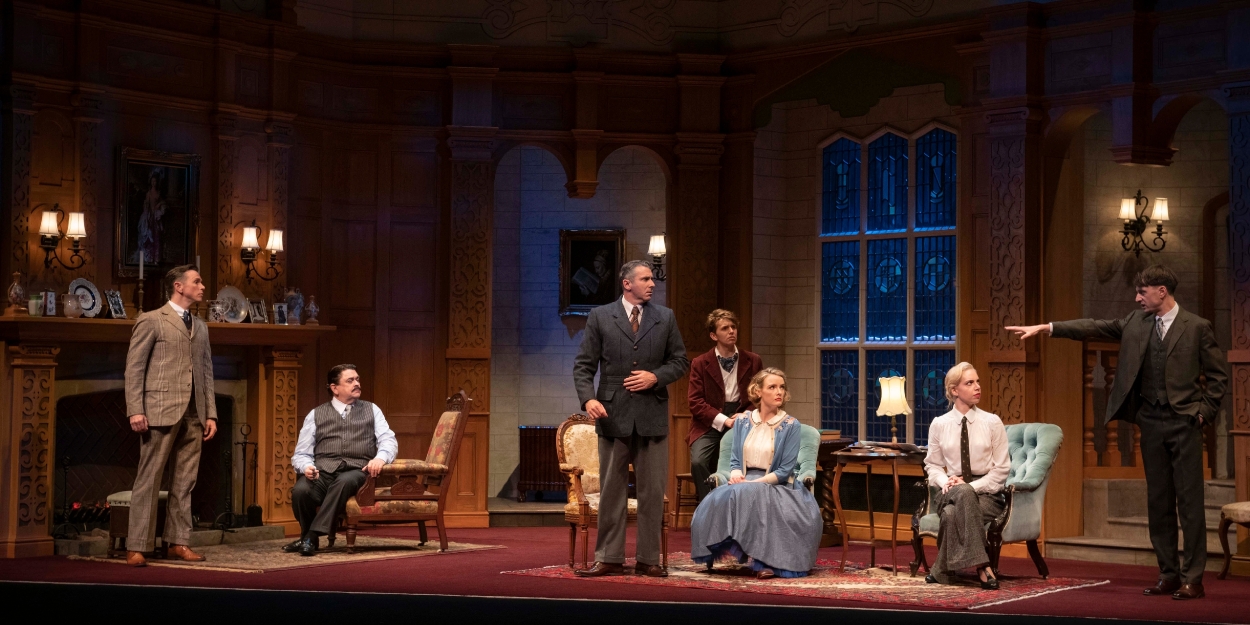Review: THE MOUSETRAP at Her Majesty's Theatre, Adelaide Festival Centre
Agatha Christie's most famous play.

Agatha Christie's famous murder-mystery play that has been running in the West End for seven decades, The Mousetrap, directed by Robyn Nevin for John Frost and Crossroads Live, has arrived in Adelaide. It premiered on 6th October 1952, and is still running, pausing only for a short time between March 2020 and May 2021 due to COVID. It was originally written as a radio play, Three Blind Mice, aired in 1947, and then rewritten as a short story, not to be published until six months after the play had closed. That short story, of course, still hasn't been published, apart from in a collection of her stories, published in America. Some readers might recall the Therry Dramatic Society's 2011 production of this play.
Audiences were told to keep the ending secret so as not to spoil it for those who had not yet seen it. That is irrelevant nowadays, of course, as a quick search on the internet will readily reveal a complete synopsis, including the twist ending. I will, nevertheless, stop short of that ultimate revelation in this review.
The year is 1952, long before mobile 'phones and the internet, with communication limited to the often unreliable wired telephone. The murder of a woman named Maureen Lyon has been committed in London, and is reported on the radio. A note pinned to her body states, "This is only the first", and a notebook contains the words, "Three blind mice", and the address of Monkswell Manor.
Over a short period of time, four guests, Christopher Wren, Mrs. Boyle, Major Metcalf, and Miss Casewell, arrive at the remote Berkshire guesthouse, Monkswell Manor, which is owned by Mollie Ralston, whose husband, Giles, assists her in running the place. The young couple welcomes their very first guests, having only now opened the Manor for business. Those four are later joined, unexpectedly, by Mr. Paravicini, who claims that his car had overturned in a snowdrift. The snow is, by now, falling heavily and they are soon snowed in.
A call from Superintendent Hogben of the Berkshire Police informs them that he is sending an officer, and Detective Sergeant Trotter arrives on skis, informing them that one of the people there is the murderer. The telephone is found to be no longer working, the line having been cut leaving them all completely isolated. Just before the interval, leaving the audience to ponder during the short break on who might be the murderer, one of the guests is found, strangled.
In the second act, the skis go missing, cutting off Trotter's only means of contacting the outside world. Trotter investigates and, after enough red herrings to stock a fish shop, the murderer is eventually revealed. You'll need to buy tickets to find out what happens.
Robyn Nevin has assembled a great cast and neatly captured the style of the era. Anna O'Byrne and Alex Rathgeber play Mollie and Giles Ralston, married for a year after a whirlwind romance. It is, in fact, their first anniversary. O'Byrne and Rathgeber are convincing as the happily married young couple, tentatively starting on a new project, running a business that is completely new to them. They develop their characters, adding depth, as the play progresses, lies are revealed and suspicions grow. They reveal that there is more to their characters than first appears.
The first guest to arrive is the flamboyant, and camp, Christopher Wren, portrayed with enormous energy and great comic timing by Laurence Boxhall, He gradually reveals his character's fragility and fears, becoming gradually more complex and throwing off the façade of a fool.
Major Metcalf, played by Adam Murphy, and Mrs. Boyle, played by Geraldine Turner, arrive together in a taxi from the station. Turner is marvellous as the cantankerous, self-important horror who, from the moment that she arrives, does nothing but complain and criticise. The Major is the opposite. Murphy is every bit the strong silent type, who divulges almost nothing about himself.
The last of the guests to arrive is Miss Casewell, played by Charlotte Friels, elegantly dressed as the rather masculine expatriate who now lives on an island in Spain, and is briefly visiting her homeland. Friels creates a character who is cool, calm, and collected, and also very private, until the very end.
Gerry Connolly plays the unexpected fifth arrival, Mr. Paravicini, who seems to be using a fake foreign accent, and sporting makeup to change his appearance. Connolly injects plenty of fun into the larger-than-life character who takes great delight in goading Detective Sergeant Trotter
Tom Conroy plays the very unconventional policeman, Detective Sergeant Trotter, who is not averse to browbeating the others, or playing mind games, making them suspicious of one another, in order to achieve his aims. Conroy is a commanding presence, strutting the stage, and confronting the others.
The set, the Great Hall of the manor, is imposing, with a large fireplace, oak panelling, and stained glass windows, as well as a collection of solid, well-upholstered chairs. The original 1952 Set Design is by Roger Furse. The carefully crafted lighting design, by Trudy Dalgleish, links to the numerous lights in the Great Hall, and the passages and stairs leading into it. The fine period costumes are by Isabel Hudson.
This is a work that will definitely please audiences, but the Adelaide season is not going to run for decades, so book those tickets quickly, if you haven't already done so. Remember, though, once you know whodunit, tell nobody.
Photography, Brian Geach.
Reader Reviews
Videos

